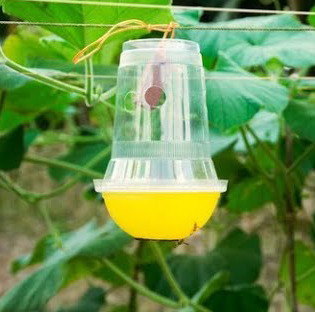Don't wanna be here? Send us removal request.
Text
Exploring the Science and Efficacy of Modern Insect Catchers

Insects play a vital role in our ecosystem, from pollination to decomposition. However, when they invade our homes and gardens, they can become unwelcome guests, causing discomfort and potential health risks. This is where insect catchers come into play. These devices provide an effective and environmentally friendly solution for managing insect populations. In this blog, we'll explore the science behind insect catchers, their types, and their benefits.
Understanding Insect Behaviour:
Insects are attracted to various stimuli, including light, heat, and scents. Understanding these behaviours is crucial in designing effective insect catchers. Most insect catchers use a combination of these attractants to lure insects into traps where they are captured and eliminated. By mimicking natural attractants, these devices can effectively reduce insect populations in a targeted manner.
Types of Insect Catchers:
Light Traps: Light traps use ultraviolet (UV) light to attract insects, especially nocturnal species like moths and flies. Once attracted, the insects are either trapped on a sticky surface or electrocuted by an electric grid. Light traps are commonly used in residential areas, commercial spaces, and agricultural settings.
Pheromone Traps: These traps utilise synthetic pheromones to mimic the chemical signals insects use to communicate. Pheromone traps are particularly effective for monitoring and controlling specific insect species, such as fruit flies and moths. They are widely used in integrated pest management (IPM) programs.
Sticky Traps: Sticky traps are coated with a glue-like substance that captures insects upon contact. These traps can be used both indoors and outdoors and are effective against a wide range of crawling and flying insects. They are often used in greenhouses, gardens, and homes.
Vacuum Traps: Vacuum traps use suction to capture insects. These devices are particularly effective against flying insects like mosquitoes and flies. They are often used in residential areas and outdoor spaces to reduce the presence of biting insects.
Chemical Attractant Traps: These traps use food-based or chemical attractants to lure insects. Once inside the trap, insects are either killed by a toxic agent or trapped until they die. These traps are effective against a wide range of insect species and are commonly used in agricultural and food processing settings.
Benefits of Using Insect Catchers:
Environmentally Friendly: Insect catchers provide a non-toxic alternative to chemical insecticides, reducing environmental impact and the risk of harming non-target species.
Targeted Control: By using specific attractants, insect catchers can target particular insect species, reducing the overall insect population without affecting beneficial insects.
Ease of Use: Most insect catchers are easy to set up and maintain, requiring minimal intervention once in place. This makes them accessible for both residential and commercial use.
Cost-Effective: Over time, insect catchers can be more cost-effective than traditional pest control methods, especially when considering the reduced need for chemical treatments and the longevity of the devices.
Health and Safety: Reducing the presence of insects, particularly those that bite or sting, can improve the overall comfort and safety of living and working environments. This is especially important in areas where insects can transmit diseases.
Conclusion:
Insect catchers represent a significant advancement in pest management, combining scientific principles with practical application to create effective, environmentally friendly solutions. Whether you're dealing with a minor nuisance at home or managing large-scale agricultural operations, understanding the various types of insect catchers and their benefits can help you choose the right tool for the job. By using these devices, you can maintain a healthier, more comfortable environment while supporting ecological balance.
1 note
·
View note